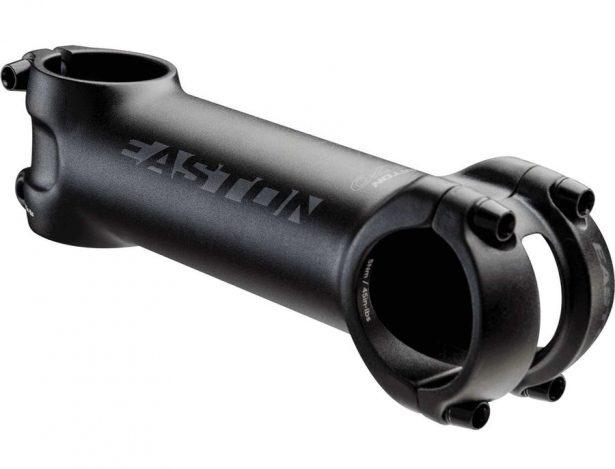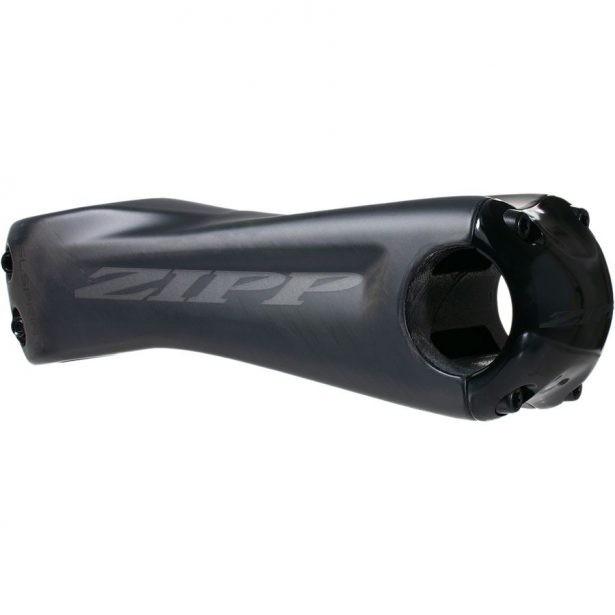Introduction
A bicycle stem is a fairly simple component. It is the part that connects the bicycle’s handlebars to the frame by clamping to the fork’s steerer tube. This simple function is critical primarily from a safety standpoint, being a component that should be able to handle various forces including the rider’s upper body weight and road vibrations.
Therefore, high-quality stems are often overengineered with particular attention paid to a good stiffness-to-weight ratio. Stem choice also affects the way a bike fits the rider and handles on the road, hence the importance of choosing the right stem geometry, which we address among other important stem selection considerations below.
Road bike stem types
There are two main types of road bike stems, which is determined by the type of headset your bike’s frame uses. The overwhelming majority of modern bicycles have what is known as a threadless headset, and accordingly use a threadless stem which clamps to the fork’s steer tube.
The other, older type of stem is known as a quill stem, and it is used on bikes that employ forks that have a threaded streerer tube. In this article, we focus on modern threadless stems.
Choosing a stem: selection criteria:
The stem geometry
A stem will have four key measurements: length, rise, handlebar clamp diameter and fork steerer tube clamp diameter.
1. Length
Stem length is a primary aspect to consider, due to its direct relationship to the upper body positioning, general bike fit and handling characteristics on the road. Pick a stem that’s too long and you might feel overstretched on the bike and have less control especially in tight turns and at higher speeds.
While the correct stem length is ideally determined by a proper bike fitting session, experimenting with different lengths can allow you to settle on the one that feels best on your bike and for your style of riding.
Generally speaking, most road bikes come with stem lengths between 90mm to 120mm. If you feel like you need a stem shorter or longer than these lengths, then a session with an experienced bike fitter is probably in order!
2. Rise
The stem rise (or its opposite: drop) is the angle the stem deviates from horizontal, or the 90-degree angle with the steerer tube. Many threadless stems can be flipped to give either a rise or drop, depending on the rider’s preference.
If you observe competitive road racing bikes, you will find that many are fitted with either zero drop (90 degrees with the steerer tube) or a drop angle (some people use the contradictory term “negative rise“) to give racers a more aggressive, stretched out and aerodynamic position on the bike.
Most recreational road riders will be most comfortable with either a neutral angle (i.e. zero drop) or a slight rise (5 to 7 degrees). Keep in mind that handlebar height can also be tweaked using spacers under the stem (with slightly different bike fitting considerations that we won’t get into in this article).
3. Fork clamp diameter
With very few exceptions, almost all modern road bike fork steerer tubes measure 1 1/8″ at the clamping area. Older bikes use the now obsolete 1″ size.
4. Handlebar clamp diameter
Similarly, the dominant handlebar diameter standard on contemporary bikes is the 31.8m clamp. Older handlebars came in 25.4mm size. The only current exception to the modern 31.8mm standard is the 35mm system made by the Italian component manufacturer Deda.
Stem materials
Most road bike stems are made using lightweight aluminum alloy. More expensive options shave some grams by using fancier materials like carbon fiber and titanium. These more exotic materials usually mean a rather significant jump in price, so it is important to consider whether the minuscule weight savings over a high-quality alloy stem are important to you.
A selection of the best road bike stems on the market
Easton EA70 Aluminum Stem

The Easton brand has long been associated with high quality bike components.
Their road and mountain bike component ranges are identified with a simple model designation that indicates the construction material and its position in their model hierarchy.
The EA70 stem, with a forged alloy construction, is their midrange offering. It offers a very good value, subtle styling to match any bike and some nice touches like an optional faceplate with an integrated bike computer mount. The EA70 stem is offered in lengths from 70mm to 120mm in 10mm increments.
Ritchey WCS Chicane Stem
 The Ritchey WCA Chicane is a lightweight alloy stem that offers a very clean and refined look with a smooth matte black finish and no bolts visible from the front. This stem employs a hinged face plate with two rear-facing bolts.
The Ritchey WCA Chicane is a lightweight alloy stem that offers a very clean and refined look with a smooth matte black finish and no bolts visible from the front. This stem employs a hinged face plate with two rear-facing bolts.
Ritchey claims this design improves the aerodynamic properties of the stem, which is something road racers will appreciate. It comes in lengths from 80mm to 130mm and a -10 degrees drop.
Thomson X2 road bike stem
 Thomson is known for manufacturing high-quality and well-designed bike components. Their X2 road bike stem is machined from 7000 series alloy, has a two-bolt face plate and has a striking gloss black finish.
Thomson is known for manufacturing high-quality and well-designed bike components. Their X2 road bike stem is machined from 7000 series alloy, has a two-bolt face plate and has a striking gloss black finish.
The X2 is also offered in silver and a light shade of green that Thomson calls “jungle”. The X2 comes in lengths from 70mm to 130mm and 10 and 17 degree rise versions.
Zipp SL Sprint Carbon Stem

The Zipp SL Sprint stem is a high-end road bike stem that prioritizes stiffness for demanding racing applications. It features a full carbon fiber construction for an impressively low weight considering the relatively bulky design. The Sprint SL comes with a rather hefty price tag, but competitive races will appreciate the high stiffness and low weight it offers.
PRO Vibe Carbon Stem

PRO Bike Gear is Shimano’s brand of cockpit components. The PRO Vibe Carbon stem features a unidirectional carbon fiber construction with an alloy faceplate that offers a sleek design that complements any road bike’s cockpit.
The PRO Vibe can be used in +8 and -8 degree rise orientations, comes in lengths from 80mm all the way to 130mm and is fully compatible with Shimano’s Di2 electronic groupset drivetrains. This stem is among the premium offerings on the market, which is reflected in the price.
Redshift Sports ShockStop Suspension Stem
The Redshift Sports ShockStop Suspension Stem has a rather unique feature aimed at increasing comfort for riders who often ride long distances on rough surfaces. The ShockStop has an integrated elastomer-based suspension system that offers 20mm of movement at the handlebar, which lessens the vibrations and shocks transmitted to the rider’s arms when riding stiff road bikes on rough roads.
It comes with several swappable color-coded elastomers that offer various degrees of cushioning, depending on rider weight and preference. The slight weight penalty over traditional stems will certainly be worth the increase in comfort if your rides often take you on less than ideal surfaces.
PNW Components Coast Stem

The PNW Coast stem is technically a gravel bike stem (the longest length it is offered in is 100mm), but we include it here because it has a nifty and innovative feature: an integrated GoPro-style mount that is easily and quickly adjustable using a 3mm hex key.
With lights, computers and other accessories competing for handlebar real estate, handlebars can get a little crowded, and such a clever little mount is a simple and elegant solution to tidy up your bars.
Final notes
Pick a stem to match your bike fit and riding style
Any component upgrade should always match your intended style of riding. Road racers will appreciate lightweight stems with an improved stiffness and aggressive geometry, while leisure riders will probably prioritize comfort and convenience features such as integrated mounts and suspension as offered by some of the stems listed above.
With today’s increasingly diverse set of offerings on the bike components market, it is important to first think about your own riding scenarios and consider the features most important to you, which will make selecting the stem that best fits your needs much easier.
Fitting your new stem to your bike
Having picked the right stem upgrade, the next step will be fitting it to your bike. Modern road bike frames and components are made of thin-walled alloy and carbon fiber, requiring a careful installation with proper tools according to manufacturer specifications.
You will need to note the factory installation torque values defined by the stem manufacturer, make sure you have a torque wrench with the bits to match the stem’s fasteners as well any supplementary materials such as carbon friction paste in case of any carbon fiber components (be that the stem itself or the fork steerer tube, or both).
If you don’t have the tools and/or the mechanical skills to properly fit your new components, it is always best to take it to your local bike shop who will have the necessary expertise for a safe and correct installation.

Hani Morsi is a seasoned multi-discipline cyclist with a particular liking for mountain and gravel bikes. Hani is also a mountain bike coach, trail builder and experienced bike mechanic.



